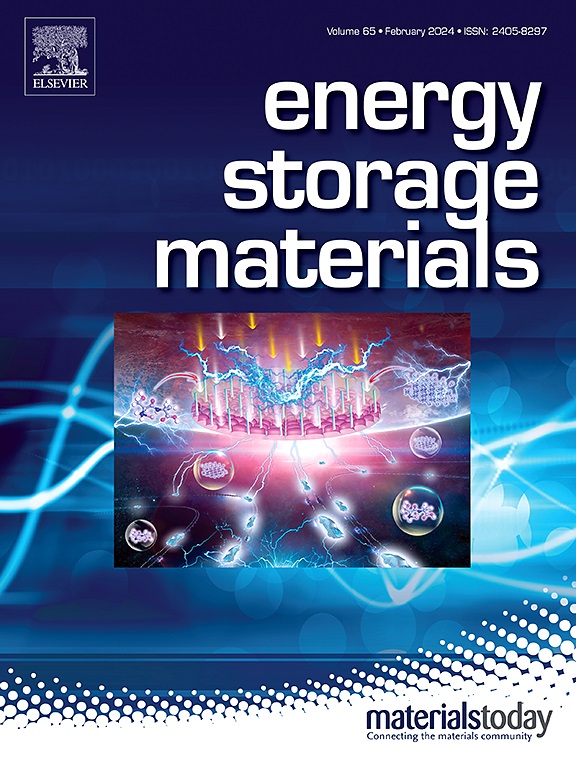Heteroatom-tuned Bi pz-orbital hybridization of single-atom catalysts for high-power density vanadium flow batteries
IF 20.2
1区 材料科学
Q1 CHEMISTRY, PHYSICAL
引用次数: 0
Abstract
Highly active single-atom electrocatalysts can effectively enhance the power density of vanadium flow batteries by forming hybrid orbitals between metal atoms and heteroatoms. However, the mechanism through which hybrid orbitals boost the activity of vanadium ions remains unclear. Herein, we report the Bi single atoms electrocatalysts (XBi, X = N, P, S, B) with different heteroatoms coordination, while catalytic activity towards [V(H2O)6]3+/[V(H2O)6]2+is proved to be NBi>PBi>SBi>BBi. The results demonstrated that PBi, SBi, and BBi display the electron cloud distributions of Bi atoms near the fermi level towards the planar direction (px, py), while NBi exhibits an axial orbital (pz) distribution and a more pronounced Bi-N p-orbital hybridization due to the high electronegativity of N, thereby promoting vanadium ion dehydration. In consequence, a VFB single cell equipped with NBi decorated graphite felt (GF) electrode demonstrates the most superior battery performance among all fabricated electrodes, achieving a 7 % increase in energy efficiency at a current density of 240 mA cm−2 compared to the BBi-loaded counterpart. The hybrid orbital engineering strategy establishes a design paradigm for single-atom electrocatalysts in high-power density VFBs.


高功率密度钒液流电池单原子杂原子调谐Bi - pz轨道杂化
高活性单原子电催化剂通过在金属原子和杂原子之间形成杂化轨道,有效地提高了钒液流电池的功率密度。然而,杂化轨道提高钒离子活性的机制尚不清楚。本文报道了具有不同杂原子配位的Bi单原子电催化剂(XBi, X=N, P, S, B)对[V(H2O)6]3+/[V(H2O)6]2+的催化活性为NBi>;PBi>SBi>BBi。结果表明,PBi、SBi和BBi在费米能级附近向平面方向(px, py)显示Bi原子的电子云分布,而NBi则表现为轴向轨道(pz)分布,由于N的高电负性,Bi-N p轨道杂化更为明显,从而促进了钒离子的脱水。因此,配备NBi装饰石墨毡(GF)电极的VFB单电池在所有制造的电极中表现出最优越的电池性能,在240 mA cm - 2的电流密度下,与负载bbbi的电池相比,能量效率提高了7%。混合轨道工程策略为高功率密度vfb中单原子电催化剂的设计提供了一个范例。
本文章由计算机程序翻译,如有差异,请以英文原文为准。
求助全文
约1分钟内获得全文
求助全文
来源期刊

Energy Storage Materials
Materials Science-General Materials Science
CiteScore
33.00
自引率
5.90%
发文量
652
审稿时长
27 days
期刊介绍:
Energy Storage Materials is a global interdisciplinary journal dedicated to sharing scientific and technological advancements in materials and devices for advanced energy storage and related energy conversion, such as in metal-O2 batteries. The journal features comprehensive research articles, including full papers and short communications, as well as authoritative feature articles and reviews by leading experts in the field.
Energy Storage Materials covers a wide range of topics, including the synthesis, fabrication, structure, properties, performance, and technological applications of energy storage materials. Additionally, the journal explores strategies, policies, and developments in the field of energy storage materials and devices for sustainable energy.
Published papers are selected based on their scientific and technological significance, their ability to provide valuable new knowledge, and their relevance to the international research community.
 求助内容:
求助内容: 应助结果提醒方式:
应助结果提醒方式:


